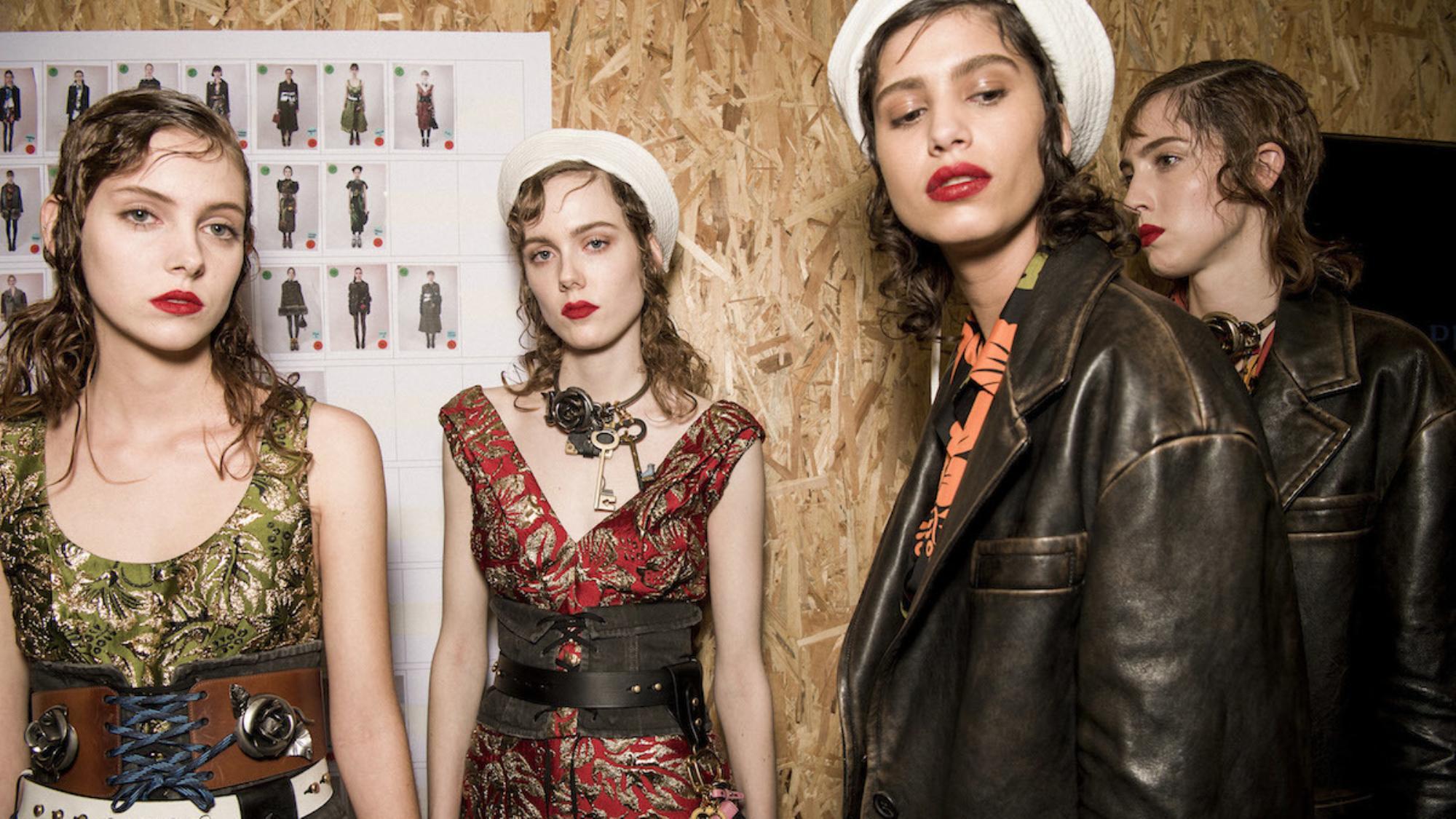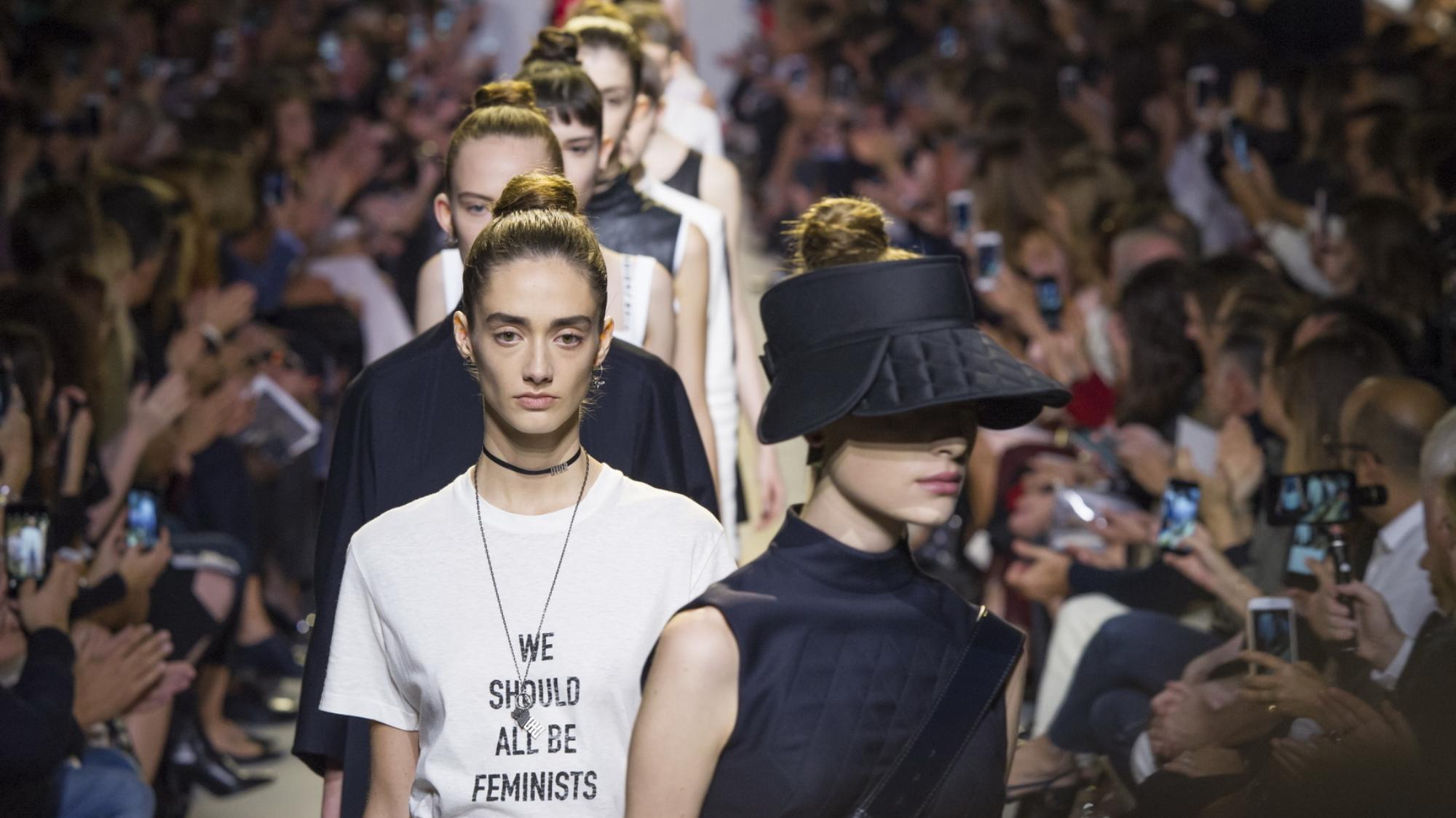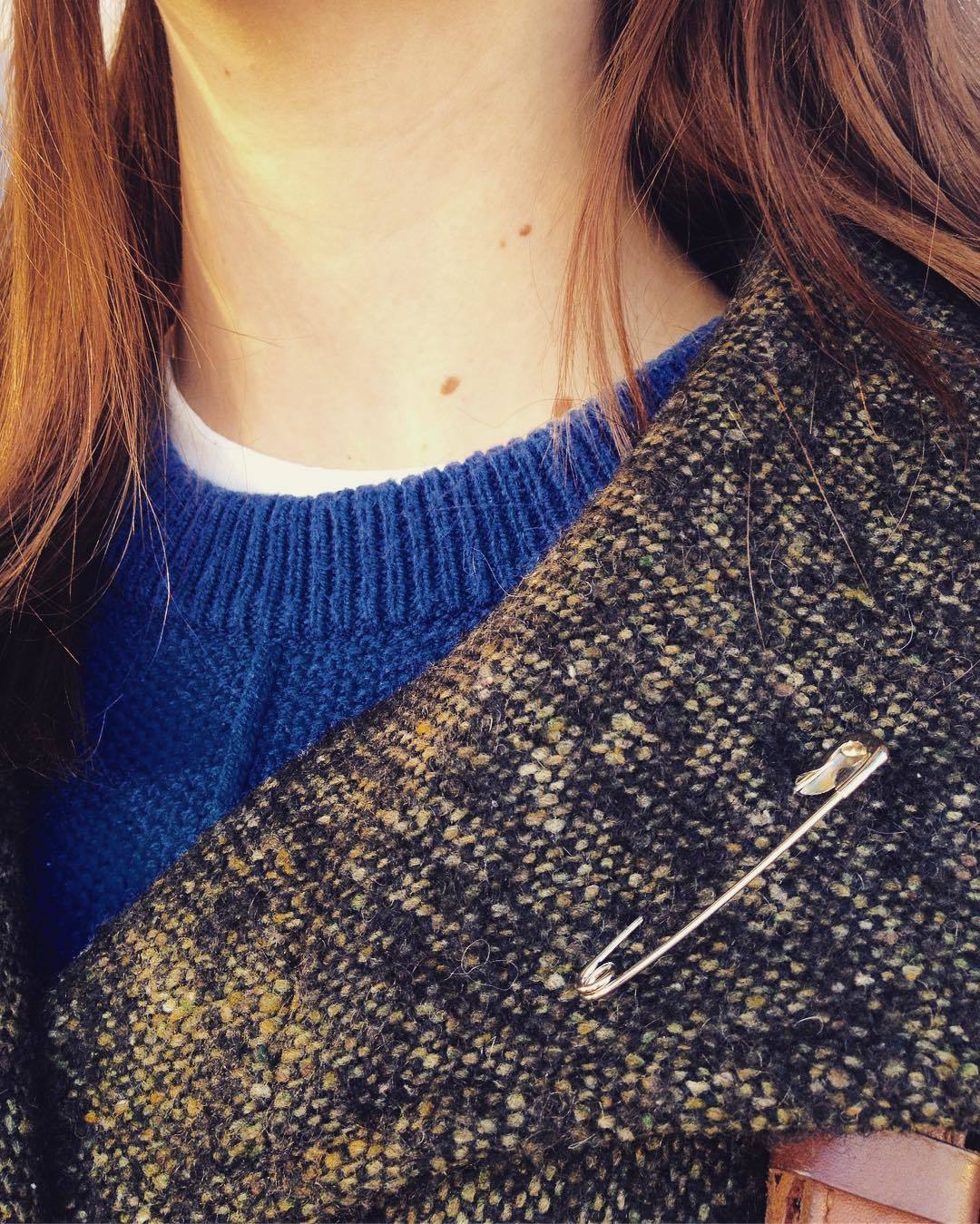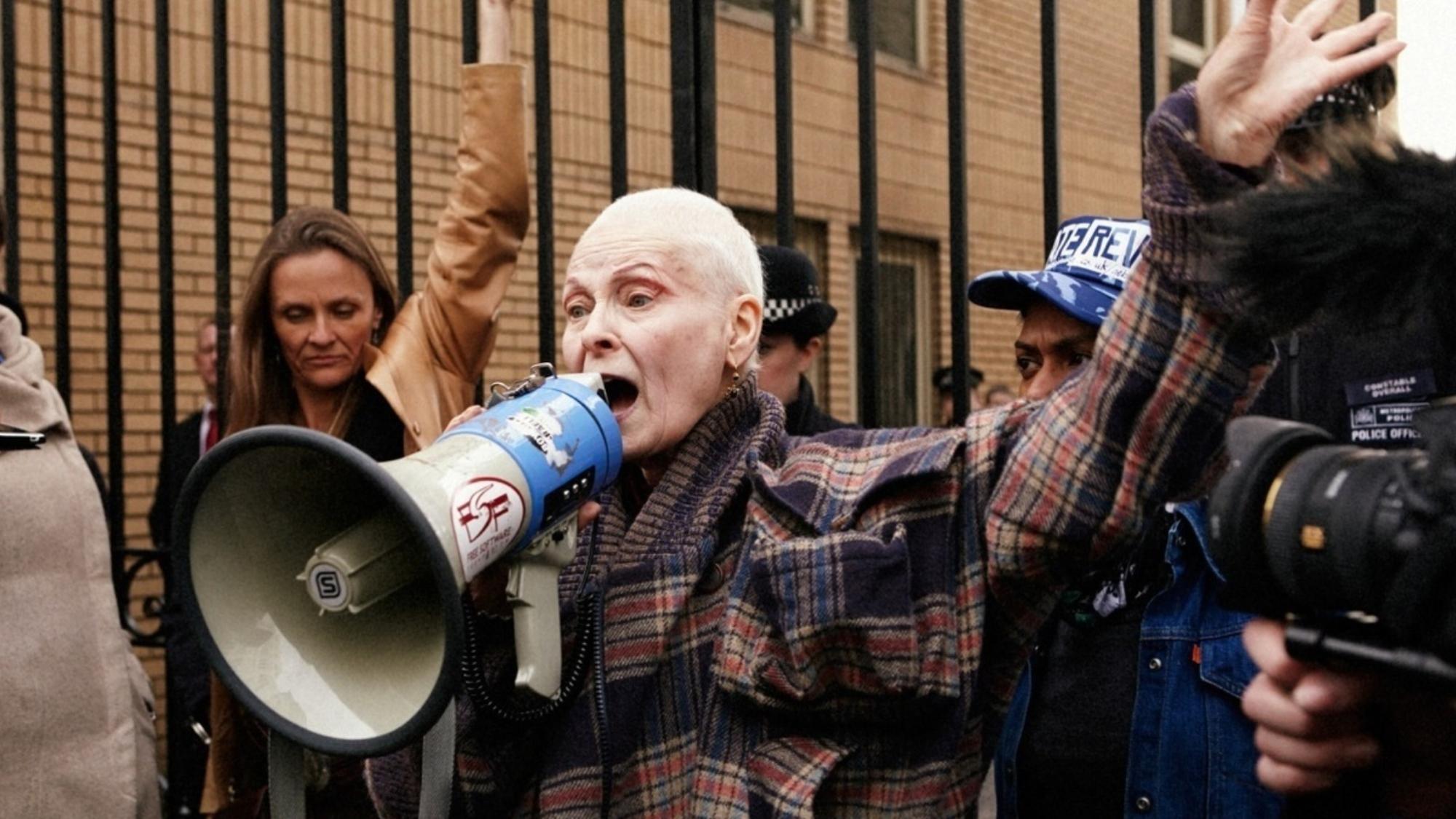Although their connection doesn’t always get the intellectual and social credit it deserves, fashion and politics have always been linked. The last century is littered with examples of how clothes offer an accessible point of protest, and a voice to groups who are marginalised or silenced. During the Second World War, French women used hats and accessories as a way to stand against Nazi occupation and celebrate French culture. When the arts were under attack, they decorated themselves in symbols, literally spinning resistance into the clothes on their backs.
Similarly the LGBTQ community has long seen fashion serve as a place of expression during times when individuals were unable to openly demonstrate their gender and sexuality in public. From suffragettes who dressed and presented as men in an attempt to cast off oppressive gender norms, to queer people of colour reinterpreting the dandy aesthetic, dressing has been a way to press against gendered and cultural expectations in colonial societies.

During the March on Washington in 1963 women of colour wore denim overalls as a sartorial marker of their commitment to civil rights. While more recently the conversion of politics and style became global news via Hillary Clinton’s pantsuits. Firstly as an example of a women in power using clothes to balance the expectations around the female and masculine ideals we project onto public figures of both sexes; and ultimately as a symbol of solidarity, as women all over the world donned them in support.
It’s a connection the fashion world has long understood and fostered, actively exploring the way they can use their platform and influence to create an environment they want to live in. Designers including Rick Owens, Vivienne Westwood, Stella McCartney and Miuccia Prada consistently use the catwalk as a space to ignite public dialogue around issues such as animal rights, body image, the refugee crisis, equality and diversity.
Ironically, in the recent past it’s this coming together of activism and intense luxury brands that have lead to some of the most direct examples of real change through fashion. By mobilising a huge fanbase and sphere of influence Stella McCartney has not only educated her audience — who perhaps came for her Beatles-offspring cool — to the environmental and social cost of animal products. Additionally she’s influenced the industry as a whole, pioneering the use of renewable and biodegradable materials, and refusing to collaborate with brands who don’t do the same.

In the past season alone we’ve seen Dior, Public School, Prabal Gurung and Opening Ceremony offer their own spin on political t-shirts. But while the recent examples may have attracted more social media support than ever before, and certainly launched more think pieces, they’ve also drawn attention to the reality of how the lines around these issues are able to blur. As a result we’ve seen many consumers asking how the relationship between fashion and activism is complicated by the ever growing presence of consumerism and brands trying to jump on any nearby ethical bandwagon. Today the current generation of socially conscious fashion fans are being called to take ownership of this unfolding piece of history, and ask what impact fashion offers as a protest tool in 2017. After all, in a community that’s increasingly learning to interrogate its own activism — or ally-ism — we need to ensure fashion exists as a weapon, not a crutch.
As the recent examples of Dior and Prabal Gurung’s feminist-messaged merchandise highlighted, wearing your heart on your sleeve, or chest, or head if you’re a pussy hat fan, is an undeniably impactful way to express your solidarity with a group. But they also demonstrate the dangers around a movement becoming an aesthetic, that sees a message diluted by countless people parroting it without totally understanding its meaning. Any commercialisation of ideas — whether it’s by Prabal Gurung or Labyris Books — opens a belief system up to being a marketable product.
Speaking to Claire Burman and Nellie Eden for i-D recently, Mushpit co-founder Bertie Brandes detailed the dangers complicit in political fashion: “If fashion is the commodification of aspirational trends, which it is, this is a perfect example of a perfect product: aspirational in both price and politics.” Referring to Dior’s ‘We Should All Be Feminists’ offering she continued, “That T-shirt is a hilariously sharp if unconscious depiction of how capitalism, as an ideology, will hijack literally anything in order to appear relevant.”
Of course the balm to this very understandable concern is that this kind of coverage isn’t just about flattening ideas, but spreading them. As Chimamanda Ngozi Adichie has remarked, “the goal of feminism is to make itself redundant, and to get there it needs to be a mass movement”. In short, any megaphone is useful, and if fashion is doing that, the dissemination of good ideas trumps concerns about shady intentions. Adichie stresses, “feminism is not an exclusive little party that you go to if you read the right books.”

But in a world where information is more fluid and malleable than ever before, we’re left asking if making information accessible — always a good thing — also invites an oversimplification and deadening of ideas. In this sense, it isn’t so much about an ideology being simplified to fit on a cap, but rather being taken away and inverted to ultimately damage the causes we’re fighting for. Something displayed in the painful irony of high street brands producing political tees in sweatshop conditions with no money going to altruistic causes.
Moving away from the debate around your ‘The Future is Female’ tee, elsewhere in consumer culture the most widely discussed example of this is in environmental action. Over the last decade companies have become aware of consumers’ growing interest in sustainable practices and products, and in turn responded with real missions of change. Brands as varied as Toyota, Johnson & Johnson and Starbucks have all been praised for their growing commitment to sustainability.
But in their wake are the countless companies who realise that being seen to care is often as effective, and less work, than committing to real change. This process of spending more time and money claiming to be “green” through marketing than actually implementing ethical practices has since become widely known as “green washing.”
So in light of the changing way we speak through our clothes, or rather how brands have become more savvy in marketing to our social consciousness, we’re left asking: can fashion and politics have a meaningful relationship in the 21st century?
Obviously, the existence of this article itself serves as a meta example of how clothes are continuing to serve as one of the most accessible conversation starters, and are continuing to help us engage and scrutinise our own worlds. But it’s important that our introspection is vigilant.

When many white individuals chose to wear a safety pin to mark them as allies in the days following Trump’s election this is what they were attempting to do, to use their clothing to communicate who they were and what they believed in. But soon many people of colour and other minorities began to bristle at the gesture. In the months since, the safety pin movement has become an example of the threat of hollowness that surrounds fashion activism.
Critics pointed out that adorning yourself in this way made no real statement, and served no real commitment to work for a better world. What it did was publicly mark you as ‘woke’ with no follow up consideration, highlighting the biggest issue with political fashion — not focusing on doing good, but looking like you are good.
In a recent discussion on NPR’s Code Switch podcast discussing the role and place of white allies, producer Juleyka Lantigua-Williams stated that to really be active and helpful in a cause you had to “have something that you give up.” She continued that to show up to a march, sign a petition, retweet a hashtag, or wear a t-shirt wasn’t enough. You need “an approximation of what it’s like to live without the privilege that you have grown up with your entire life.”
In the same conversation activist and blogger ShiShi Rose added, “I think people get so wrapped up in what label they’re going to put on, and how it looks, and how that’s going to appear to everybody else — and not enough about the action that they’re doing.”
With this echoing in our minds, the division between a safety pin, a pair of Stella McCartney boots or the carefully coded accessory of French revolutionaries becomes clear. Fashion still has the ability to serve as a legitimate statement, but can easily become a hollow offering. Ultimately we need to see political clothes as a great start, but a weak end. Let your t-shirt be the intro, not the whole conversation.
Credits
Text Wendy Syfret
